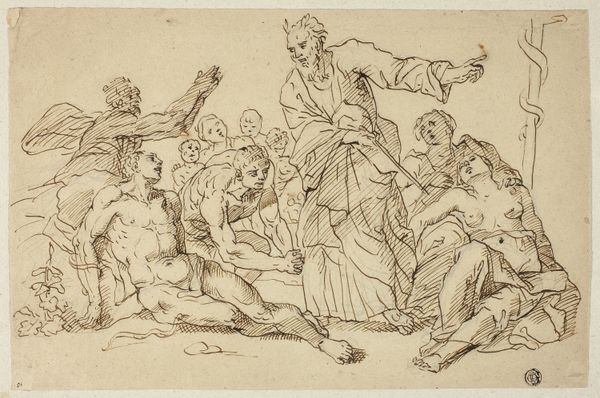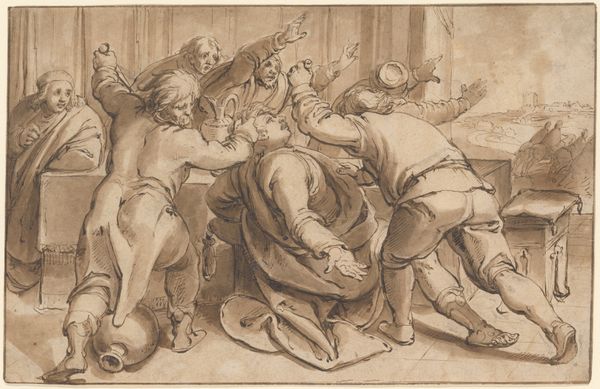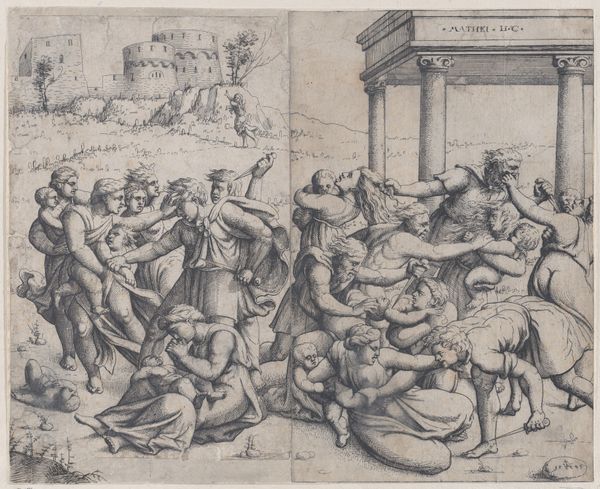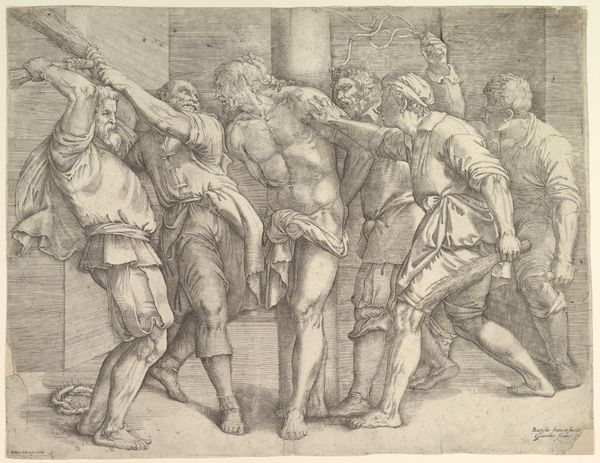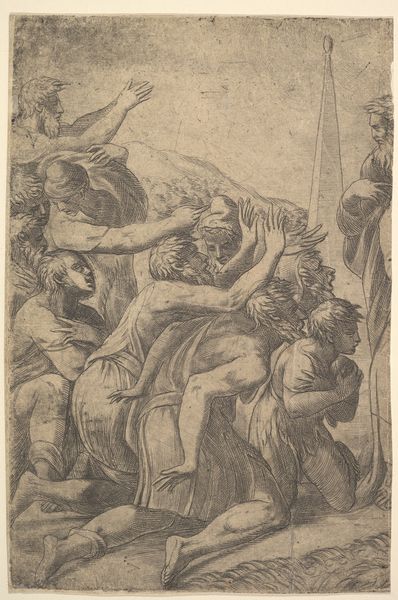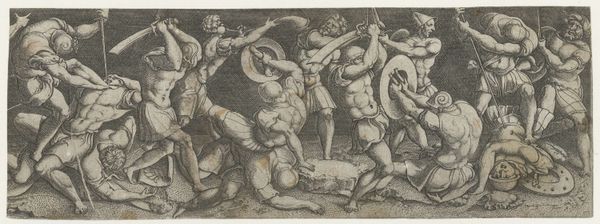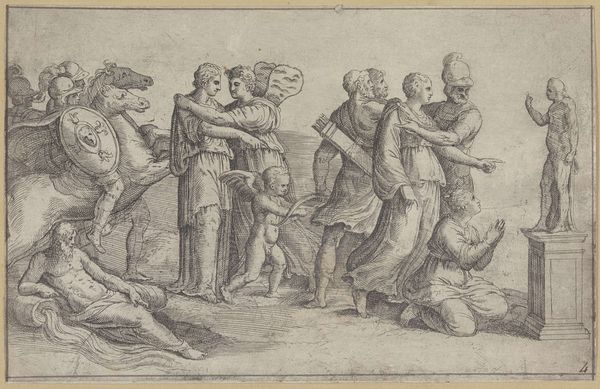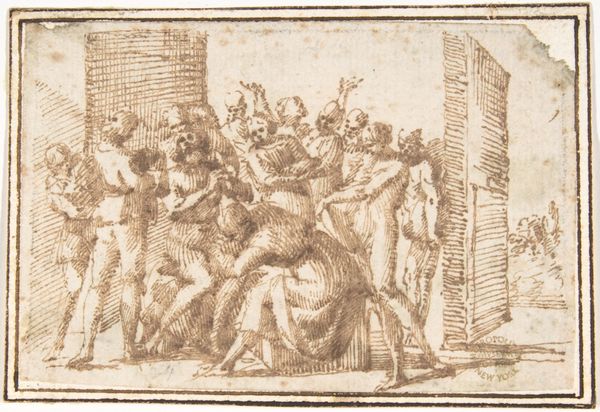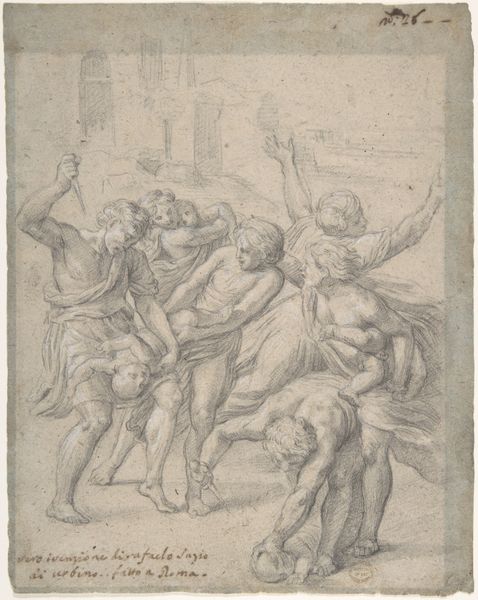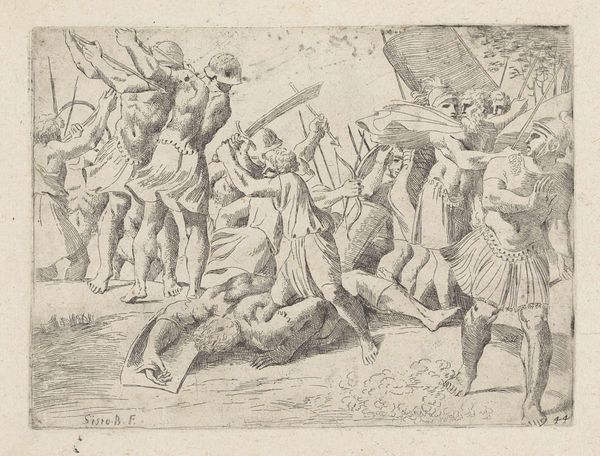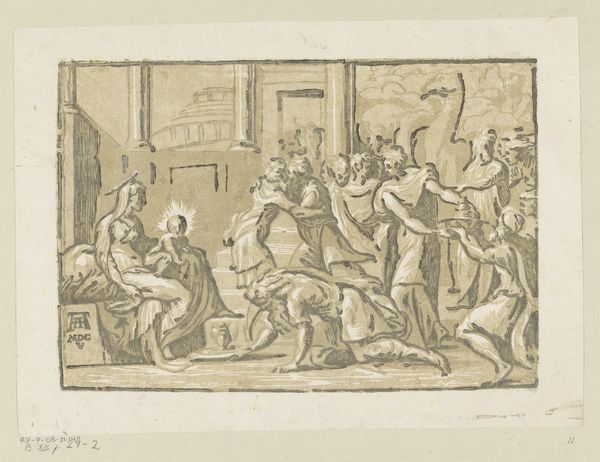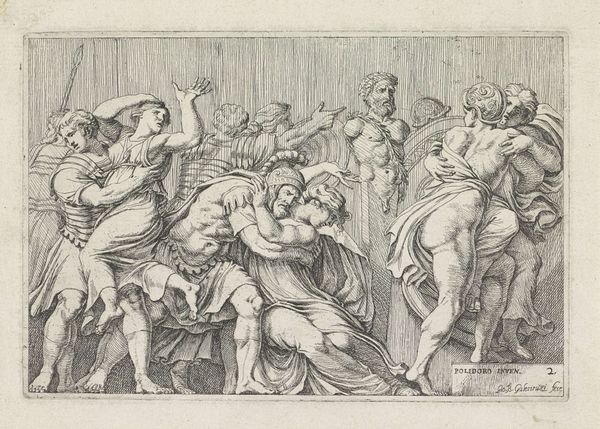
drawing, print, ink, pen
#
drawing
#
ink drawing
#
narrative-art
#
baroque
#
ink painting
#
pen drawing
# print
#
classical-realism
#
figuration
#
ink
#
pen
#
history-painting
#
academic-art
#
italian-renaissance
Dimensions: 5-15/16 x 19-3/4 in. (15.1 x 50.2 cm)
Copyright: Public Domain
Curator: Well, the scene before us is entitled "The Rape of the Sabines" by Giacinto Gimignani, created sometime between 1606 and 1681. It's an ink and pen drawing currently housed at the Metropolitan Museum of Art. Quite a sweeping vista, wouldn’t you say? Editor: Sweeping is definitely one word for it! It’s…a bit of a chaotic jumble at first glance. So many bodies in motion, it feels like trying to catch smoke. Curator: Indeed. Gimignani encapsulates a pivotal founding myth of Rome. The Romans, desperately short of wives, invited the neighboring Sabine people to a festival, and then, at a prearranged signal, seized the young Sabine women for themselves. Editor: Yikes. So, all this frantic energy is…kidnapping? It’s unsettling. I mean, look at how the women are drawn, the exaggerated gestures, the desperate clutching. There’s definitely a sense of forced drama here. Curator: Exactly. The visual vocabulary employed resonates deeply with archetypal themes of power, dominance, and forced assimilation that recur throughout history. Note the positioning of the Roman men, elevated on what appears to be a type of stage or temple. This gives a distinct hierarchical arrangement with them literally looking down on the Sabine people. Editor: And they’re all so...stoic-looking! Even the ones actively grappling seem devoid of any real passion or emotion. Just…business. Which makes it all the more chilling, somehow. Almost like a performance of masculinity rather than genuine feeling. What do you make of the color palette, the absence of bold colors? Curator: Ah, that's an interesting point. Gimignani worked during a time when preparatory drawings were, in essence, ends unto themselves. Using only the muted sepia tones allowed him to convey both depth and texture using only gradations of ink. The pen work provides detail, with the shading imbuing the whole thing with an emotional undertone which adds to its narrative heft. The crosshatching enhances our emotional response here. Editor: It works. It definitely gives it an antique, almost fossilized feeling. Like this story has been unearthed from centuries ago, still echoing with that initial…trauma, for lack of a better word. It’s a piece that certainly makes you think, though maybe not about pleasant things. Curator: Precisely! It reminds us that many foundational myths are deeply entwined with violence and subjugation, the long shadows of which persist to this day. It serves as a stark reminder of this history, immortalized in ink and preserved for modern eyes to behold and reflect upon. Editor: Yeah, it certainly leaves you chewing on something. I wonder if there's hope amidst all that struggling.
Comments
No comments
Be the first to comment and join the conversation on the ultimate creative platform.
